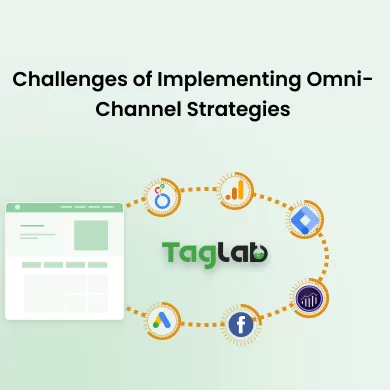Your cart is currently empty!
Cost per Install (CPI) Metric Definition
Posted by:
|
On:
|
Cost per Install (CPI) measures the amount spent on advertising to acquire each new user who installs a mobile application. This metric is essential for mobile app marketers to assess the efficiency of their user acquisition campaigns. A lower CPI indicates a more cost-effective strategy, while a higher CPI may signal a need for optimization. CPI is commonly used in industries like gaming, e-commerce, and social media, where user acquisition is a key growth driver.
Detailed Explanation
What is Cost per Install (CPI)?
Cost per Install (CPI) represents the average cost incurred to acquire each new app user through paid campaigns. It is a crucial metric for app marketers who aim to maximize user growth while keeping acquisition costs low. CPI is widely used in performance marketing to evaluate the efficiency of campaigns across different ad channels and user segments.
How it Works?
CPI is calculated using the following formula:
CPI = Total Ad Spend / Number of Installs
This formula provides the average cost per user install, helping marketers understand the financial efficiency of their campaigns. CPI is often tracked across different channels, campaigns, and target audiences to identify the best-performing strategies.
Types of CPI Insights
- Channel-Specific CPI: Tracks the CPI across different ad platforms like Facebook, Google, or TikTok, helping optimize ad spend by channel.
- Campaign-Specific CPI: Measures CPI at the campaign level to identify which specific ads drive the most cost-effective installs.
- Segmented CPI: Analyzes CPI by user demographics, geographic location, or device type for targeted optimization.
Illustrative Scenarios
Examples
- A gaming app spends $5,000 on a Facebook campaign that results in 1,000 installs, yielding a CPI of $5.
- An e-commerce app tracks CPI across multiple channels and finds that TikTok ads deliver a CPI of $3, while Google Ads yields a CPI of $6, leading to a budget reallocation to TikTok.
Segmentation
CPI can be segmented by geographic location, user demographics, and device type to understand which segments are more cost-effective. For instance, an app might find that CPI is lower in certain regions, helping prioritize marketing spend in those areas.
Factors Influencing CPI
- Ad Platform: Different ad platforms have varying CPIs, influenced by user demographics, targeting options, and competition.
- Targeting Precision: More refined targeting often increases CPI due to narrower audience pools, though it can lead to higher quality installs.
- Ad Quality: High-quality ads with compelling creatives can attract more installs, reducing the CPI.
- Market Competition: In highly competitive app categories, CPI tends to be higher due to increased bidding costs.
- Geographic Targeting: Targeting certain regions may result in different CPIs, as ad costs vary by location.
Strategies to Reduce CPI
- Optimize Ad Creatives: Design engaging, relevant ads that attract users and encourage installs, lowering CPI.
- Use Retargeting Campaigns: Engage potential users who showed interest but didn’t install, improving conversion and reducing CPI.
- Experiment with Channels: Test multiple ad platforms to find the ones with the lowest CPI for your target audience.
- Adjust Targeting Strategy: Refine targeting to reach cost-effective segments, balancing reach and relevance.
- A/B Test Ad Variations: Regularly test different ad formats, messaging, and visuals to identify the most effective options for reducing CPI.
Benchmark Indicators
Understanding CPI benchmarks by industry helps businesses evaluate acquisition efficiency and set realistic goals for cost per install:
- Gaming Industry: CPI benchmarks typically range from $1.50 to $4.00, depending on game type and target region.
- E-commerce Industry: CPI benchmarks range from $2.00 to $5.00, influenced by seasonality and product diversity.
- Social Media Apps: CPI generally ranges from $1.00 to $3.00, as these apps often target broad audiences.
- Fintech Industry: CPI benchmarks range from $3.00 to $7.00, influenced by the level of targeting and financial regulations.
- Healthcare Apps: CPI can range from $2.50 to $6.00, especially for wellness and telehealth apps targeting specific demographics.
- Education Apps: CPI benchmarks range between $1.50 to $3.50, especially for learning platforms and language apps.
Tools for Measuring CPI
- Mobile Analytics Platforms: Tools like AppsFlyer and Adjust track CPI, providing insights into ad performance and user acquisition costs.
- Ad Platforms: Platforms like Google Ads, Facebook Ads, and TikTok Ads offer built-in CPI metrics for app campaigns.
- Marketing Attribution Software: Platforms like Singular or Branch provide multi-channel attribution data to help optimize CPI.
Common Pitfalls and Mistakes
- Overlooking Long-Term Value: Focusing solely on CPI without considering customer lifetime value can lead to inefficient spend on low-quality installs.
- Ignoring Geographic Variance: Not adjusting campaigns based on regional CPI differences can lead to unnecessarily high costs.
- Neglecting A/B Testing: Failing to test ad creatives can miss opportunities to optimize CPI through more engaging ads.
- Underestimating Market Competition: High competition categories typically have higher CPI; marketers should set realistic goals accordingly.
- Not Analyzing Channel Performance: Failing to compare CPI across channels can result in missed opportunities for budget optimization.
Frequently Asked Questions
What is Cost per Install (CPI)?
Cost per Install (CPI) measures the average cost incurred to acquire each new user who installs a mobile application through paid advertising campaigns.
Why is CPI important?
CPI is important because it helps app marketers evaluate the efficiency of user acquisition campaigns, guiding budget allocations and optimization efforts.
How can I reduce my CPI?
To reduce CPI, optimize ad creatives, use retargeting campaigns, test multiple channels, adjust targeting, and regularly A/B test ad variations.
What factors influence CPI?
Factors influencing CPI include ad platform choice, targeting precision, ad quality, market competition, and geographic targeting.
What are good benchmarks for CPI?
Good CPI benchmarks vary by industry, with rates below $3.00 considered good for many industries, while CPIs above $5.00 suggest a need for optimization.



